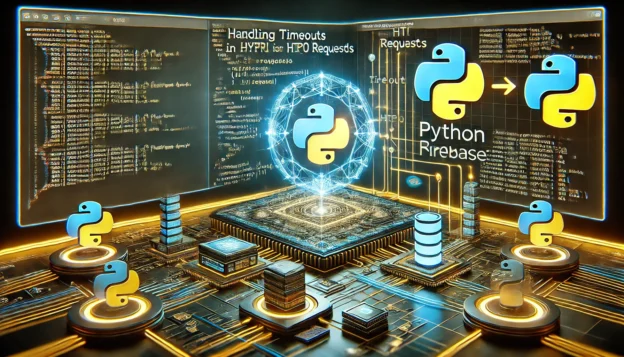Harvesting Retail Offers from Kohl’s with Kotlin & Redis: Extracting Discount Coupons, Best-Selling Products, and Customer Loyalty Perks
Harvesting Retail Offers from Kohl’s with Kotlin & Redis: Extracting Discount Coupons, Best-Selling Products, and Customer Loyalty Perks
In the competitive world of retail, staying ahead requires leveraging technology to extract valuable insights and offers. This article explores how to use Kotlin and Redis to harvest retail offers from Kohl’s, focusing on extracting discount coupons, identifying best-selling products, and understanding customer loyalty perks. By the end of this article, you will have a comprehensive understanding of how to implement a system that efficiently gathers and processes retail data.
Understanding the Retail Landscape
The retail industry is constantly evolving, with businesses like Kohl’s offering a plethora of discounts, promotions, and loyalty programs to attract and retain customers. Understanding these offers can provide a competitive edge, allowing businesses to tailor their strategies and maximize customer engagement.
Retailers often use a combination of online and in-store promotions, making it essential to have a system that can efficiently gather data from multiple sources. This is where Kotlin and Redis come into play, offering a robust solution for data extraction and storage.
Why Use Kotlin and Redis?
Kotlin is a modern programming language that offers concise syntax and interoperability with Java, making it an excellent choice for developing applications that require high performance and scalability. Its features, such as null safety and extension functions, make it particularly suitable for handling complex data extraction tasks.
Redis, on the other hand, is an in-memory data structure store that can be used as a database, cache, and message broker. Its speed and flexibility make it ideal for storing and retrieving large volumes of data quickly, which is crucial when dealing with real-time retail offers.
Extracting Discount Coupons
Discount coupons are a significant part of retail promotions, offering customers incentives to make purchases. Extracting these coupons from Kohl’s website involves web scraping techniques, which can be efficiently implemented using Kotlin.
Here is a simple Kotlin script to scrape discount coupons from Kohl’s:
import org.jsoup.Jsoup
fun main() {
val url = "https://www.kohls.com/sale-event/coupons.jsp"
val document = Jsoup.connect(url).get()
val coupons = document.select(".coupon")
for (coupon in coupons) {
val title = coupon.select(".title").text()
val discount = coupon.select(".discount").text()
println("Coupon: $title - $discount")
}
}
This script uses the Jsoup library to connect to Kohl’s coupons page and extract the title and discount information for each coupon. The extracted data can then be stored in Redis for quick access and analysis.
Identifying Best-Selling Products
Understanding which products are best-sellers can provide valuable insights into consumer preferences and market trends. By analyzing sales data, businesses can optimize their inventory and marketing strategies to focus on high-demand products.
To extract best-selling products, we can use a similar approach as with coupons, but focus on product listings. Here’s a Kotlin script to achieve this:
import org.jsoup.Jsoup
fun main() {
val url = "https://www.kohls.com/catalog/best-sellers.jsp"
val document = Jsoup.connect(url).get()
val products = document.select(".product")
for (product in products) {
val name = product.select(".product-name").text()
val price = product.select(".product-price").text()
println("Product: $name - Price: $price")
}
}
This script extracts product names and prices from Kohl’s best-sellers page. The data can be stored in Redis for further analysis, such as identifying trends over time or comparing with competitors.
Leveraging Customer Loyalty Perks
Customer loyalty programs are designed to reward repeat customers and encourage brand loyalty. Extracting information about these perks can help businesses understand what incentives are most effective in retaining customers.
Here’s how you can extract loyalty perks using Kotlin:
import org.jsoup.Jsoup
fun main() {
val url = "https://www.kohls.com/loyalty-program.jsp"
val document = Jsoup.connect(url).get()
val perks = document.select(".loyalty-perk")
for (perk in perks) {
val description = perk.select(".description").text()
println("Loyalty Perk: $description")
}
}
This script targets the loyalty program page on Kohl’s website, extracting descriptions of the available perks. Storing this data in Redis allows for quick retrieval and analysis, helping businesses tailor their loyalty programs to better meet customer needs.
Storing Data in Redis
Once the data is extracted, it needs to be stored efficiently for quick access and analysis. Redis is an excellent choice for this purpose due to its speed and flexibility. Here’s a simple script to store extracted data in Redis:
import redis.clients.jedis.Jedis
fun storeInRedis(key: String, value: String) {
val jedis = Jedis("localhost")
jedis.set(key, value)
jedis.close()
}
fun main() {
storeInRedis("coupon:1", "10% off on all items")
storeInRedis("product:1", "Nike Shoes - $99.99")
storeInRedis("loyalty:1", "Earn double points on weekends")
}
This script connects to a local Redis instance and stores key-value pairs representing coupons, products, and loyalty perks. The data can be retrieved and analyzed as needed, providing valuable insights into retail offers.
Conclusion
In conclusion, leveraging Kotlin and Redis to harvest retail offers from Kohl’s provides a powerful solution for extracting and analyzing discount coupons, best-selling products, and customer loyalty perks. By implementing the techniques discussed in this article, businesses can gain a competitive edge in the retail market, optimizing their strategies to better meet customer needs and drive sales. The combination of Kotlin’s modern programming capabilities and Redis’s efficient data storage makes this approach both effective and scalable, ensuring that businesses can keep up with the ever-evolving retail landscape.




Responses